As a strength coach and personal trainer, I love talking about weightlifting shoes, especially when it comes to their construction and how they can support performance.
Weightlifting shoes, also referred to as lifting shoes or squat shoes, are footwear designed to support weight training performance.
When it comes to working out, weightlifting shoes have multiple benefits depending on how you plan to use them. There also tend to be misconceptions about lifting shoes and when to use them, which I’ll work to clear up in this article.
Below, I’m going to discuss the anatomy of weightlifting shoes and what makes them unique compared to traditional training shoes. I’ll also talk about when to wear weightlifting shoes.
Table of Contents+
Anatomy of Weightlifting Shoes
There is a lot that goes into the construction of weightlifting shoes. Since weightlifting shoes are so specific to weight training, it’s a good idea to have a basic grasp of the construction details that go into the lifting shoes you’re looking to invest in.
Not to mention, weightlifting shoes can typically be more expensive so I think it’s important that you know what you’re getting so you can make the best investment possible for your needs.
Below, I’m going to discuss five key construction details that influence performance and contribute to the anatomy of weightlifting shoes. for this article, I’m going to be hyper-specific to aspects of weightlifting shoes that correspond most with performance output.
Toe Box
The toe box of a weightlifting shoe is incredibly important to look at and consider. Essentially, a shoe’s toe box is the area of the shoe that starts at the base of the forefoot and runs to the end of the shoe where the toes sit.
For weightlifting shoes, a toe box is important for toe splay and comfort. When training, you’ll typically want a toe box that allows the toes to spread and engage with the floor. This can help with balance and stability and increase the overall comfort of the shoes.
The top of a weightlifting shoe’s toe box will be enclosed by the upper materials that are used in the shoe. This will typically be constructed with meshes, synthetic materials, and knit blends.
Most weightlifting shoes will also have toe guards surrounding the toe box for added security and to prevent sliding in addition to extended outsole wraps.
Outsole
The outsole of a weightlifting shoe is important for stability, ground feedback, and traction. When lifting, you’ll want a weightlifting shoe with an outsole that feels stable and protective.
A good weightlifting outsole will provide you with traction on wooden platforms, rubber gym floors, and even carpet which is what you compete on in most powerlifting federations.
With squats, clean & jerks, snatches, and even accessory exercises, the last thing you want is slippage or compression. This is why pretty much every good weightlifting shoe utilizes full rubber outsoles with different tread patterns.
The rubber outsoles that are used for weightlifting shoes will typically feel and be more firm than rubber outsoles used in normal training shoes. This is to add to the shoe’s stability and rigidity while training.
Midsole
A shoe’s midsole can be a make-or-break construction feature when discussing the stability of certain weightlifting shoes. Unlike training shoes, a weightlifting shoe’s midsole materials will usually be far denser in nature and non-compressive.
This is important for performance because as weight gets heavier in exercises, you’ll want a material that can withstand the external loads you’re using.
Plus, with more dynamic movements like snatches and clean & jerks, you’ll want a material that helps you stabilize when catching weight and not rebound or bounce during the catching phase.
Most weightlifting shoes will use either thermoplastic polyurethane (TPU), wood, stacked leather, and high-density foam. All of these materials are stable in nature and provide different levels of stability. I’ve created the list above to reflect how each material differs from stable to slightly less stable.
In terms of long-term durability, you’ll typically get more out of TPU heels as they don’t show signs of wear and tear nearly as easily as the other materials. They’re also not as prone to moisture damage as wood and stacked leather midsoles can be.
It can also be useful to look for shoes that utilize the thicker rubber on the outsole as the main midsole material for the forefoot. The two models on the left in the image above using the outsole as the main “midsole” component in the forefoot, while the Nordic model on the right uses a foam layer for its midsole.
Elevated Heel
While every construction detail of weightlifting shoes mentioned in this is important, the elevated heel that comes on weightlifting shoes can be the most influential when it comes to performance output.
Every weightlifting shoe will have some level of heel elevation and this is what makes weightlifting lifting — weightlifting shoes. Heel heights can vary from .5″ to 1.2″ depending on the weightlifting shoe you decide to buy.
The midsole materials used in weightlifting shoes will be the main material that is used to create the elevated heel. This is why selecting the right material and heel height can be so influential on a shoe’s individual performance.
Both of these characteristics should reflect how you plan to use the shoes and your level of training. For example, if you’re a beginner, then you can usually find benefits with nearly any combination of midsole material and heel height.
Then, as you get more specific and experienced with your training, these two characteristics can matter more. If you’re someone who’s taller for example that competes or lifts heavy, then you’d likely want to explore higher heel elevations and more stable materials like TPU.
The big takeaway with elevated heels in weightlifting shoes is that there is no “one-size-fits-all” heel height that is best for everyone. Like your preferred heel-to-toe drop for training shoes, a weightlifting shoe’s heel elevation should be individual for your wants and needs.
Midfoot Straps and Security
Another construction staple of weightlifting shoes that is different from traditional training shoes is the additional midfoot security that a shoe provides. Midfoot security is important in weightlifting shoes to promote a locked-down and stable feeling when training.
The security that a shoe provides will vary based on the materials and security system that a weightlifting shoe utilizes. Examples of additional midfoot security systems include velcro straps and BOA lacing systems.
A singular midfoot velcro strap is the most common form of midfoot security you’ll see on weightlifting shoes. Other midfoot security systems include dual velcro straps that cover the bottom and top of the midfoot as seen in the Nike Romaleos 4 (featured below on the right) and the not-so-common BOA lacing system seen in the Adidas Leistung 16 II.
Most midfoot straps and security systems work well for a vast majority of lifters and athletes, so I wouldn’t stress the details too much when deciding on things like a singular versus double strap construction.
When to Wear Weightlifting Shoes
There are a variety of settings in which you can wear weightlifting shoes to support your performance. In regard to weightlifting shoe misconceptions, it’s often this topic where athletes and lifters lack context for properly using lifting shoes.
In many cases, lifters think weightlifting shoes can only be used for benefit with squats, clean & jerks, and snatches. That’s not entirely true and there are other settings where weightlifting shoes can be really beneficial.
So, while yes, those are the most common times to wear lifting shoes, you can also use them for machine exercises like leg presses and hack squats and also accessory movements where you either want to create a quad bias or focus on torso mechanics.
To elaborate on the above, weightlifting shoes can be awesome tools to use on machines where your anatomy may not align with the machine’s construction or you’re trying to create something like a quad bias.
A good example here would be doing something like a quad-biased leg press. If you notice that it’s impossible to get into a position where you can promote more knee tracking while pressing, then using a weightlifting shoe can be a nice means of putting you into a proper setup based on your training goals.
Another example would be using weightlifting shoes to focus on torso and pelvis squat mechanics when doing unilateral accessory exercises like split squats or bilateral exercises like goblet squats. An elevated heel can help with focusing on sequencing squats with a more upright torso.
Here are a few occasions where weightlifting shoes can be really useful for supporting your training performance.
- Squat Sessions
- Weightlifting Sessions (clean & jerk, snatch, and weightlifting accessories)
- Leg Exercises Where a Quad Bias Is the Goal
- Accessory Squat Sessions Where Squat Mechanics Is the Goal
- Machine Exercises hen a Machine Doesn’t Align With Your Anatomy
When thinking about “when to wear” weightlifting shoes, remember that they can essentially serve as a heel wedge that you’re wearing versus stepping on. There are multiple occasions outside of weightlifting and squat days where a heel wedge can be useful.
Why You Shouldn’t Wear Weightlifting Shoes All of the Time
When discussing the topic of why not to wear weightlifting shoes all of the time, it’s important to recognize that how you approach this topic should be individual for your training needs and goals.
Personally, I like to approach this topic from a point of view that looks at weightlifting shoes on a spectrum of specificity. On this spectrum, we have times when weightlifting shoes are more important and useful, then times that can vary based on the training block or exercise’s goals.
In my coaching opinion, I think the biggest thing to remember when thinking about using weightlifting shoes for your workouts is to conceptualize how useful they are for your specific training goals and needs.
If you compete with weightlifting shoes in weightlifting or powerlifting, then you’ll want to wear them for most of your training sessions where you’re trying to improve your competition lifts.
For recreational lifters, then I think directing shoe use to your session and training block goals can be a productive approach. This way you can expose yourself to different squat environments like squatting with and without an elevated heel to build well-rounded squat mechanics.
If you’re working with a coach, then defer to them for what they would like you to do and approach this topic. Coaching opinions can vary here which is perfectly fine and normal.
How Long Do Weightlifting Shoes Last?
If you invest in a good pair of weightlifting shoes and limit their use to only lifting sessions, then they should last you a while. This may be a bold statement, but a good pair of weightlifting shoes should last at least 1-2 years for most recreational lifters.
Now, this timeline can vary slightly based on the quality of the shoes you buy and how hard you are on them in regard to your strength sport, and how frequently you’re using them.
For example, if you buy budget Amazon weightlifting shoes like the Nordic Lifting Powerlifting Shoes (featured above), then you’ll get less out of their long-term durability compared to a higher quality model. This is due to this shoe’s midsole and outsole materials lacking.
Additionally, if you’re a weightlifting athlete that is training 4+ times a week, then you’ll also typically find that you go through weightlifting faster than your more recreational peers. This is pretty normal though for every sport and most specific athletes.
In my opinion, I always suggest that recreational lifters invest in better-constructed weightlifting shoes because they’ll typically last a while so your investment will be well worth it in the long run.
How to Clean Weightlifting Shoes
How you take care of and clean your weightlifting shoes can play a large role in how long your shoes will last. Similar to training shoes, I always recommend spot cleaning your weightlifting shoes when it’s time to give them some TLC.
Spot cleaning takes a little extra time and elbow grease versus throwing your shoes in the washing machine, but the payoff is that your shoes will gain a healthy amount of time in their lives.
- Total Time: 10-20 minutes
Step 1: Grab some lukewarm water, a soft soap that is free of harsh dyes and scents, and a washcloth or two.
Step 2: Get the washcloth damp and dab a little soap on the cloth. On areas of weightlifting shoes that are fairly dirty and dusty, give them a good wipe down.
Step 3: Once you’re satisfied with the job, take the insoles out of the shoes and place them next to a floor vent in a dry area to help them dry faster and evenly.
I’d recommend doing this every 4-6 months based on how often you’re wearing your shoes and what type of gyms you’re training in. Some smaller gyms can run a little dirtier than others, so you may need to spot clean your shoes more often than someone who uses their shoes infrequently for big box commercial gyms.
How to Make Weightlifting Shoes Last Longer
As someone who’s gone through a fair amount of weightlifting shoes and as a shoe reviewer, I’m constantly trying to figure out how to get my favorite shoes to last longer.
In my opinion, weightlifting shoes can be frustrating to replace because since they last a while, you’ll often find that your favorite models are out of stock when it’s finally time to replace them. Gives a side-eye to my old Nike Romaleos 2.
Below are three of my favorite tips for getting your weightlifting shoes to last longer. Yes, these tips can seem a little excessive, but when push comes to shove, I’d rather get more out of my shoes and prolong my favorite shoe’s life.
- Spot Clean: Try to give your shoes a nice spot cleaning every 4-6 months, which is something I discussed above.
- Open the Gym Bag: After your training session, try to open your gym bag to leg your gear air out. Knee sleeves, belts, straps, socks, shoes, etc., can all hold moisture and create a humid environment, especially after tough sessions. This humid environment can wreak havoc over time on materials used in shoes. Bonus points if you take your shoes out of your bag.
- Unlace and Lace: With their additional midfoot security, try to limit how much you’re jamming your foot into your weightlifting shoes. Doing this can be a sure-fire way to break down the boot of your shoe at a faster rate than you want. I had this happen with my Reebok Legacy Lifter IIs and I regret not taking the extra 30-seconds to unlace them.
It’s actually insane how many months you can add to your shoes by following these tips. These tips also apply to cross-training shoes, so don’t be afraid to use similar logic to your training shoes to get more out of your investment.
Frequently Asked Questions (FAQ)
Q:Do weightlifting shoes really help?
Q:What is the point of weightlifting shoes?
Takeaway Thoughts
There is a lot that goes into the construction of the average weightlifting shoe. With elevated heels, additional midfoot security, and stable outsoles, weightlifting shoes can be awesome tools for a variety of lifters.
Before investing, I’d suggest recognizing how you plan to use your weightlifting shoes. This can help you find the model with the best price point for your needs.
If you have additional questions about weightlifting shoes, drop a comment below or reach out to me personally via Instagram (@jake_boly or @that_fit_friend)!



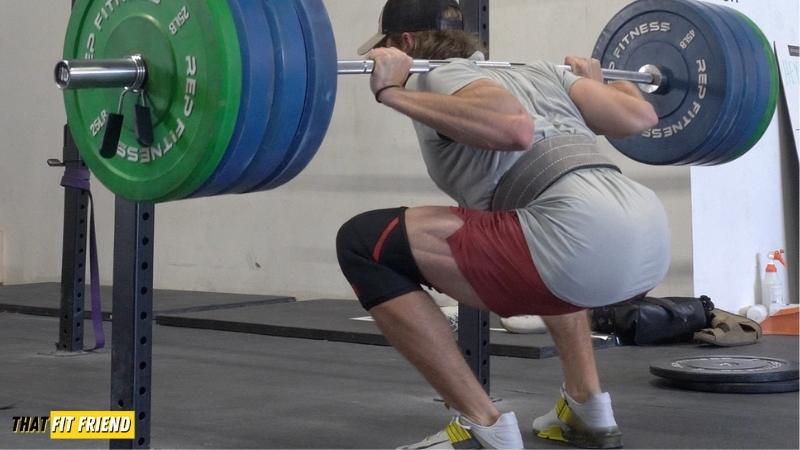











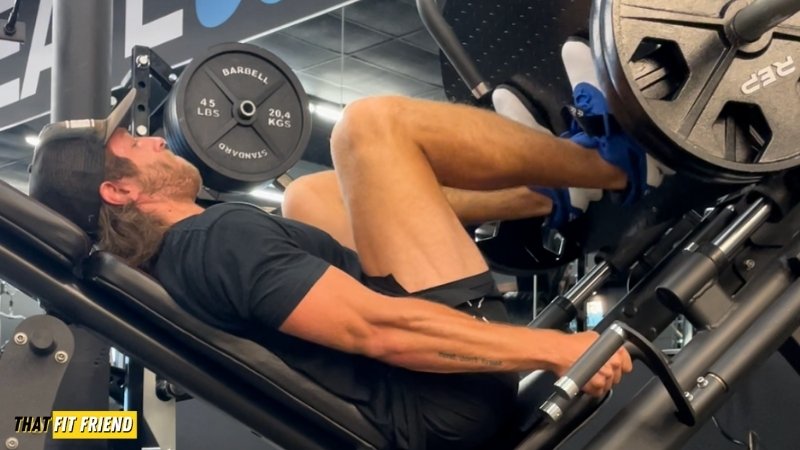











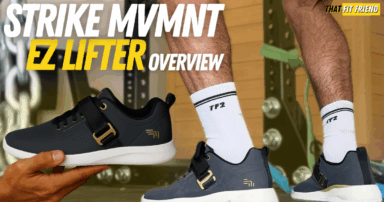
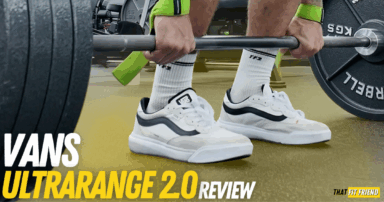
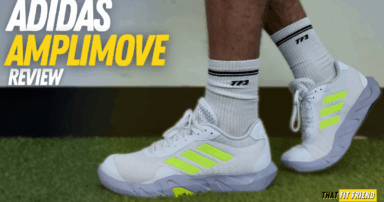
Add a Comment